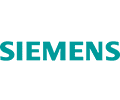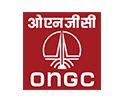
Understand The Key Trends Shaping This Market
Download Free SampleIndia Data Center Battery Market Statistics & Future Outlook (2026–2034)
- The India Data Center Battery Market is expected to grow at a CAGR of around 18.13% during 2026 - 2034.
- In 2025, the market was valued at nearly USD 0.97 million.
- By 2034, it is projected to reach around USD 4.35 million.
- Integration of renewable energy drives demand for advanced battery solutions ensuring uninterrupted data center operations.
- Land acquisition and urban zoning complexities delay projects and restrict expansion of large-scale battery-backed data centers.
- Government incentives support infrastructure modernization, local manufacturing, and adoption of energy-efficient battery technologies.
- Shift towards modular, scalable batteries enables flexible capacity expansion and cost-effective deployment for Indian data centers.
Insightful Analysis
The India Data Center Battery Market report insights & analysis offer in-depth understanding of market trends, growth drivers, challenges, and opportunities. This comprehensive analysis includes market size, segmentation, competitive landscape, and customer behavior to guide strategic decisions. Further, it aids in providing thorough market research, industry breakdown, market forecast, competitive examination, market trends, growth factors, SWOT analysis, and market opportunities. These insights support business planning, investment decisions, and market positioning for sustainable success.
Why Choose This Report?
- Provides a comprehensive overview of the overall market analysis, encompassing key trends, consumer behavior analysis, and risk assessment to support strategic decision-making.
- Provides accurate, up-to-date insights into market size, segmentation, and emerging opportunities, helping to minimize risk & capitalizing on growth.
- Gives deep understanding of target audience preferences, investment habits, and communication channels for enhanced product development & marketing effectiveness.
- Delivers competitive analysis & benchmarking, uncovering the strengths & weaknesses of market competitors to guide strategies.
- Consolidate comprehensive market intelligence, reducing reasoning & streamlining research efforts.
- Facilitates customized market segmentation & risk mitigation strategies, fine-tuned to the business objectives.
- Aids in identifying both market challenges & untapped opportunities within the industry to drive long-term business growth.
- Provides valuable information based on actual customer data & search trends.
India Data Center Battery Market Dynamics (2026–2034)
Market Driver:
Surge in Renewable Integration Drives Growth - A key positive influencer is the rapid integration of renewable energy sources into data centers, increasing demand for advanced battery backup solutions. Batteries are deployed in hybrid power systems to store solar or wind energy, ensuring uninterrupted operations during grid fluctuations or outages.
Major Challenge:
Land Acquisition and Urban Zoning Challenges - A distinct challenge arises from regulatory complexities in urban areas. Lengthy approval processes and local restrictions on hazardous material storage delay project timelines and limit expansion, particularly in metropolitan regions with scarce space and strict regulations.
Opportunity Ahead:
Government Incentives Pave Future Pathways - An extraordinary opportunity lies in Indian government incentives supporting infrastructure modernization and energy-efficient technologies. These policies reduce CAPEX on battery investments, encourage local manufacturing, and foster innovation in battery chemistry and form factors between 2026 and 2034.
Industry Trend:
Shift Towards Modular, Scalable Batteries - A defining trend is the adoption of modular and scalable battery systems, allowing flexible capacity expansion without overhauling existing infrastructure. Supported by specialized vendors offering customization and rapid deployment, this trend improves cost-effectiveness and aligns with demand variability.
How is the India Data Center Battery Market Defined as per Segments?
The India Data Center Battery Market segmentation categorizes the market into distinct segments based on behavioral, psychographic, geographic, and demographic factors. Firmographic & technographic segmentation for B2B or B2C markets is also included. Further, by concentrating on client, lifestyle, location, behavior, and company attributes, these segments assist businesses in targeting particular customer or user needs, enhancing product/services positioning, and improving marketing methods. Effective market reach and resource allocation are achieved through this segmentation.
What is the Impact of Artificial Intelligence (AI) on the India Data Center Battery Market?
Artificial Intelligence (AI) significantly transforms the India Data Center Battery Market by enhancing efficiency, enabling faster data analysis, and driving innovation. AI tools automate repetitive processes, provide deeper insights using predictive analytics, and improve customer experiences through personalization. The technology unlocks new opportunities but requires strategic adaptation to fully realize its benefits and manage risks. Organizations integrating AI responsibly & strategically are expected to strengthen market outlook.
Company Profile: Largest India Data Center Battery Market Companies (2034)
By 2034, the India Data Center Battery Market would be led by Tata Power, Exide Industries, Amara Raja Energy & Mobility, Reliance New Energy, JSW Energy, CATL, BYD Company, Samsung SDI, LG Energy Solution, Panasonic Holdings, Fluence (AES Corporation JV), Delta Electronics, Hitachi Energy, Siemens Energy, Ola Electric, etc., who are forecasted to generate the highest market revenues & share owing to numerous activities like partnerships, collaborations & mergers, and innovation & launch of new products/services.
Major Queries Answered in the Report
- What is the current state of the India Data Center Battery Market?
- What key developments are influencing the India Data Center Battery industry?
- Which factors are shaping growth in the India Data Center Battery Market?
- What are the challenges faced by businesses in this sector?
- How are emerging technologies transforming the India Data Center Battery industry?
- Who are the primary competitive players in the India Data Center Battery domain?
- What new opportunities exist for stakeholders and investors?
- How are consumer and enterprise behaviors evolving within the market?
- Which regional and global factors impact India Data Center Battery adoption?
- Where can stakeholders access detailed, sector-specific insights on the India Data Center Battery Market?
- What innovations are defining the industry’s next phase of growth?
Table of Contents
- Introduction
- Objective of the Study
- Product Definition
- Market Segmentation
- Study Variables
- Research Methodology
- Secondary Data Points
- Breakdown of Secondary Sources
- Primary Data Points
- Breakdown of Primary Interviews
- Secondary Data Points
- Executive Summary
- India Data Center Battery Market Dynamics
- Drivers
- Hyperscale Data Center Expansion
- Digital India Push and Regulatory Mandates
- Need for Uninterrupted Power Supply in Digital Growth
- Challenges
- High Cost for Lithium/Ion & Advanced Technologies
- Space and Environmental Concerns
- Import Duties and Regulatory Compliance
- Opportunity Assessment
- Energy Storage for Renewables Integration
- Modular/Green Battery Solutions
- Partnership Models for Large-Scale Deployment
- Drivers
- Recent Trends and Developments
- Shift from Lead-Acid to Lithium-Ion and Advanced Chemistries
- Smart Battery Management Systems and IoT Integration
- Battery as a Service (BaaS) Model Adoption
- Sustainable Disposal & Recycling Initiatives
- Policy and Regulatory Landscape
- Government Incentives for Battery Manufacturing (PLI, etc.)
- Data Sovereignty & Localisation Mandates
- Standards for Battery Recycling and Disposal
- India Data Center Battery Market Overview (2026–2034)
- Market Size & Growth, By Value (INR/ USD Million)
- Market Share, By Battery Type
- Lead-acid
- Lithium-Ion
- Nickel-based
- Flow Battery
- Others
- Market Share, By Capacity
- Small-scale (<100 kWh)
- Medium-scale (100 kWh – 1 MWh)
- Large-scale (>1 MWh)
- Market Share, By Application
- UPS Supply
- Backup Power
- Peak Shaving/Load Balancing
- Energy Storage System (ESS)
- Grid Services
- Market Share, By Data Center Type
- Enterprise
- Colocation
- Hyperscale
- Edge
- Market Share, By End User
- IT/Cloud
- Finance
- Healthcare
- Government/Defense
- Telecom
- Manufacturing
- Others
- Company Market Share Analysis
- Revenue Shares and Rankings
- Competitive Landscape Features
- Segment-wise & Industry-wise Market Overview & Forecast (2026–2034)
- By Battery Type
- By Capacity
- By Application
- By Data Center Type
- By End User
- Competitive Outlook & Profiles
- Tata Power
- Company Overview
- Business Segments
- Strategic Alliances/Partnerships
- Recent Developments
- Exide Industries
- Company Overview
- Business Segments
- Strategic Alliances/Partnerships
- Recent Developments
- Amara Raja Energy & Mobility
- Company Overview
- Business Segments
- Strategic Alliances/Partnerships
- Recent Developments
- Reliance New Energy
- Company Overview
- Business Segments
- Strategic Alliances/Partnerships
- Recent Developments
- JSW Energy
- Company Overview
- Business Segments
- Strategic Alliances/Partnerships
- Recent Developments
- CATL
- Company Overview
- Business Segments
- Strategic Alliances/Partnerships
- Recent Developments
- BYD Company
- Company Overview
- Business Segments
- Strategic Alliances/Partnerships
- Recent Developments
- Samsung SDI
- Company Overview
- Business Segments
- Strategic Alliances/Partnerships
- Recent Developments
- LG Energy Solution
- Company Overview
- Business Segments
- Strategic Alliances/Partnerships
- Recent Developments
- Panasonic Holdings
- Company Overview
- Business Segments
- Strategic Alliances/Partnerships
- Recent Developments
- Fluence (AES Corporation JV)
- Company Overview
- Business Segments
- Strategic Alliances/Partnerships
- Recent Developments
- Delta Electronics
- Company Overview
- Business Segments
- Strategic Alliances/Partnerships
- Recent Developments
- Hitachi Energy
- Company Overview
- Business Segments
- Strategic Alliances/Partnerships
- Recent Developments
- Siemens Energy
- Company Overview
- Business Segments
- Strategic Alliances/Partnerships
- Recent Developments
- Ola Electric
- Company Overview
- Business Segments
- Strategic Alliances/Partnerships
- Recent Developments
- Tata Power
- Contact Information / Disclaimer
Top Key Players & Market Share Outlook
- Tata Power
- Exide Industries
- Amara Raja Energy & Mobility
- Reliance New Energy
- JSW Energy
- CATL
- BYD Company
- Samsung SDI
- LG Energy Solution
- Panasonic Holdings
- Fluence (AES Corporation JV)
- Delta Electronics
- Hitachi Energy
- Siemens Energy
- Ola Electric
- Others
Frequently Asked Questions








